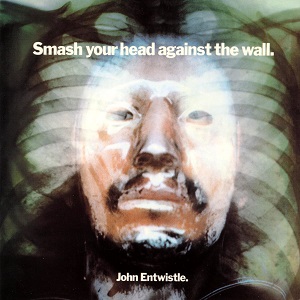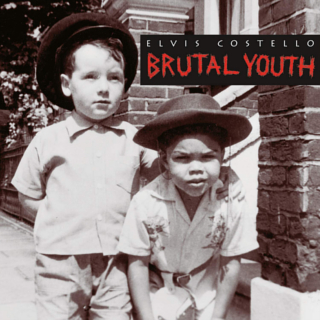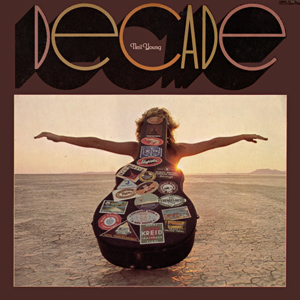 Determined to prove that Wings was no fluke, Paul added Henry McCullough on lead guitar, and the band spent 1972 on the road, putting out odd singles and getting busted for possession. None of those singles were included on Red Rose Speedway when it finally appeared, just like in the Beatle days. That’s too bad, as some of those singles would have made this album better than it is, as it isn’t very good.
Determined to prove that Wings was no fluke, Paul added Henry McCullough on lead guitar, and the band spent 1972 on the road, putting out odd singles and getting busted for possession. None of those singles were included on Red Rose Speedway when it finally appeared, just like in the Beatle days. That’s too bad, as some of those singles would have made this album better than it is, as it isn’t very good. “Big Barn Bed” springs full-blown from its teaser on Ram, having developed nicely into an actual song. Despite the heavy syrup, “My Love” is finally the classic we’d been waiting for. It’s still great today, especially that guitar solo, but fueled the fire for those who said Paul didn’t rock. Another Ram leftover, “Get On The Right Thing”, follows nicely with good dynamics, and Linda’s vocals aren’t even that obtrusive. “One More Kiss” is an unmemorable trifle, and would be rewritten to much better effect six years later as “Baby’s Request”. “Little Lamb Dragonfly” is another in what would be a long line of multi-sectioned transplants. He puts his soul into the arrangement, with lots of 12-string guitars and dramatic shifts, but by this point he’d already written a few too many songs about sheep.
The rest of the album just doesn’t go anywhere, and takes its sweet time to boot. “Single Pigeon” has some great if fleeting moments based around nice piano modulations, but such moments can’t sustain it. The same can be said for “When The Night”, which commits misdemeanors by having each of the lines echoed, exposing their emptiness in the process. It’s another shame, since that piano part at the beginning seems to portend so much before delivering so little. “Loup (1st Indian On The Moon)” is based around chanting and underwater guitar, and is a pointless jam. There is a subtle tip of the hat in the middle to Pink Floyd, who despite rumors were not recording down the hall. The final “Medley” interestingly takes four song snatches, none of them very interesting—save maybe “Lazy Dynamite”—and brings them all together at the end, when it makes sense and makes good music. Unfortunately it’s too late, and much too long a journey to endure. (Coincidentally, Paul has two separate songs called “Hold Me Tight” in his catalog, and neither of them were worth writing twice.)
As a whole, Red Rose Speedway really isn’t a horrible album, but it just doesn’t get the mixture correct. One thing this album truly lacks is balls, which Wings could pull off onstage and on some of those singles. (The initial CD reissue included three contemporary B-sides: “I Lie Around”, “Country Dreamer” and “The Mess”, only the latter of which rocks, having been recorded live.) While “My Love” helped, and the album was a chart success, Paul’s star seemed to be dimming. He did take the opportunity to put his name on the spine in front of Wings, in the hope that people would pay more attention knowing whose band it was.
The Archive Collection, 45 years later, attempted to put the album back in original context, serving up not only every single and B-side from the era but various other tracks earmarked for the album when there was a chance it might have been a double. (“Country Dreamer” was one of those, which almost justifies its duplication from another installment, but that doesn’t excuse the repeat of “Little Woman Love”, in another lapse of quality control.) For balance, the original sequence would have included a couple of Denny Laine vocals, plus Linda’s magnum opus “Seaside Woman”. These pale alongside “Mama’s Little Girl”, an acoustic gem, just as a cover of the torch song “Tragedy” is nicely arranged. The instrumental rockers “Night Out” and “Jazz Street” are little more than jams, while “Best Friend” and “1882” are live recordings, the former catchy and simple and the latter plodding and inscrutable. As it turns out, the band wasn’t too bad once they got a few shows under their belts, and considering the quality of material Paul was giving them. (In hindsight we can also see that while a double Red Rose Speedway might have been too much of not a very good thing, we feel for the poor sod, as he was still stuck on Apple Records and had to witness the label he basically launched gladly issuing not one but two double LPs by Yoko Ono over the gestation of his own album.)
If you bought the expensive box you got a disc dedicated to the double album sequence (plus video content like the James Paul McCartney TV special and the unreleased Bruce McMouse Show concert film) plus more audio of varying excitement. Of course, the best chance for people to decide if the band had any potential was onstage, as they traveled across Europe playing their slim, Beatle-free sets. To commemorate these reissues, Paulie went so far as to compile a CD of highlights from these tours, only available in a $400 box that encompassed the Wild Life and Red Rose Speedway Deluxe Editions and sold out immediately. What a guy.
Paul McCartney & Wings Red Rose Speedway (1973)—2½
1989 CD reissue: same as 1973, plus 3 extra tracks
2018 Archive Collection: same as 1989, plus 15 extra tracks (Deluxe Edition adds another 17 tracks, DVD, and Blu-ray)










